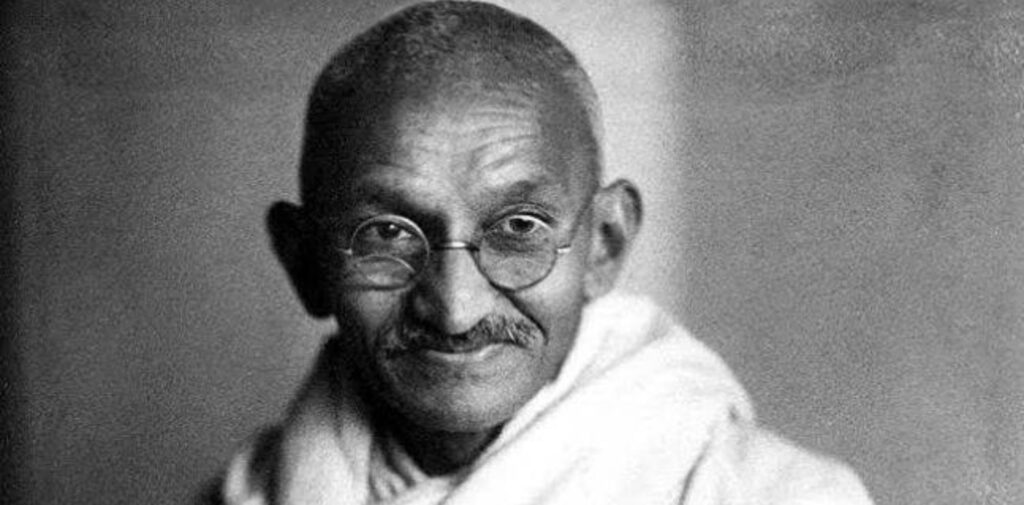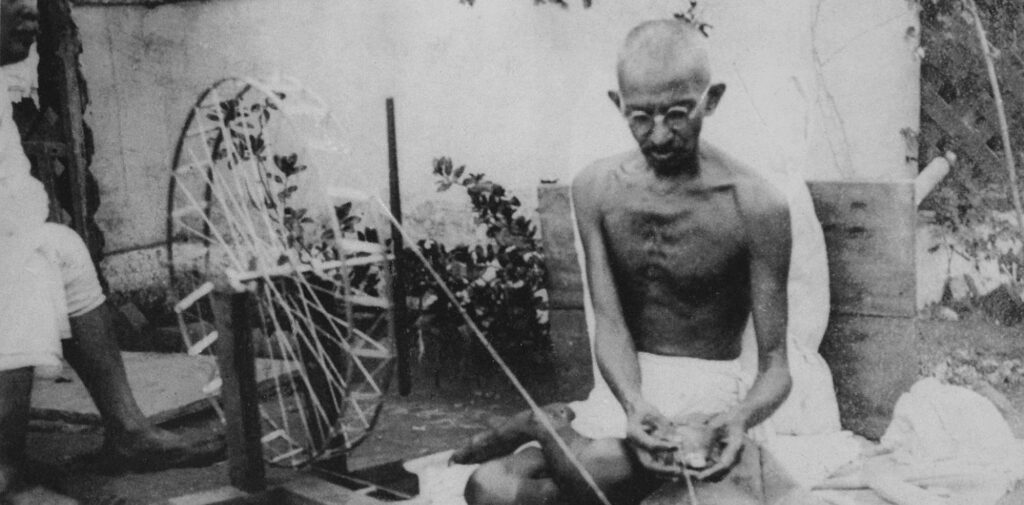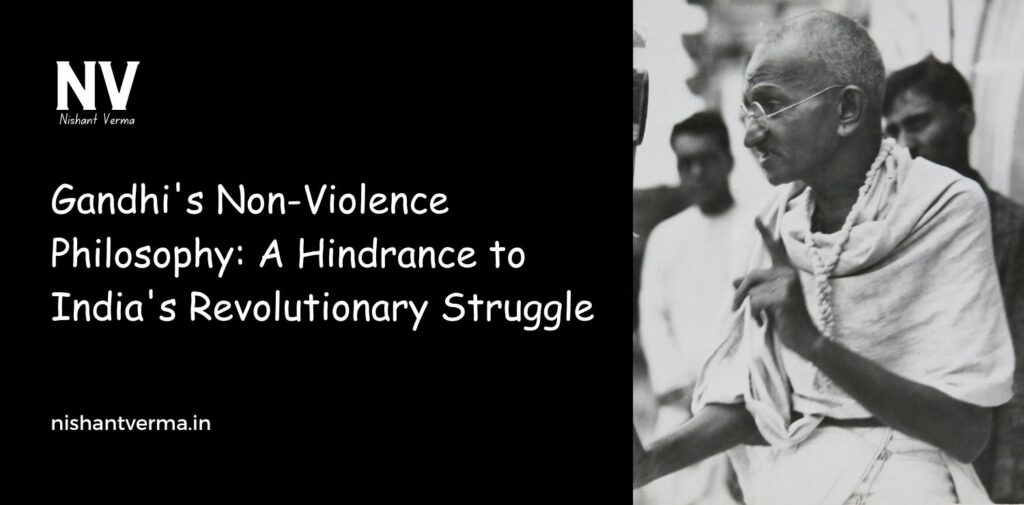Mahatma Gandhi’s Non-Violence Philosophy, or ahimsa, was one of the defining elements of India’s freedom movement. Gandhi believed in peaceful resistance and argued that non-violence was the only true path to achieving social and political change. However, while his teachings of peace, love, and non-violence inspired millions, they also sparked debates about their effectiveness in the context of India’s struggle for independence.
Many revolutionary leaders and groups felt that Gandhi’s emphasis on non-violence slowed down the momentum of the Indian independence movement. They argued that non-violence was a hindrance in a time when violent repression by the British was a daily reality for Indians. Despite this criticism, Gandhi’s philosophy shaped the course of India’s fight for freedom, but not without controversy.
Gandhi’s Philosophy of Non-Violence
Mahatma Gandhi’s non-violence philosophy was rooted in the idea that violence only breeds more violence and hatred, leading to a never-ending cycle of suffering. He believed that the use of force would not only damage the moral fabric of society but also prevent the creation of a free, just, and peaceful nation. For Gandhi, the struggle for independence should be based on truth and non-violence. He coined the term Satyagraha, which combined Satya (truth) and Agraha (firmness), meaning a firm adherence to truth and non-violence.
Gandhi’s approach involved peaceful protests, non-cooperation with the British government, and the promotion of self-reliance. He encouraged Indians to boycott British goods, use only handmade clothes, and refuse to pay taxes. His peaceful movements like the Salt March in 1930 and Quit India Movement in 1942 demonstrated his commitment to non-violence.

The Revolutionary Movements: A Different Approach
While Gandhi’s non-violence approach won him global admiration, it wasn’t universally accepted within the Indian independence movement. Many freedom fighters, particularly those from revolutionary groups, felt that Gandhi’s methods were too passive and ineffective in the face of British oppression.
Revolutionary groups, such as the Hindustan Socialist Republican Association (HSRA) and others led by figures like Subhas Chandra Bose, Bhagat Singh, and Chandra Sekhar Azad, believed that India’s freedom could only be achieved through armed struggle. They felt that non-violence allowed the British to continue their reign unchecked, as it failed to challenge the colonial system with the same force that the British used to suppress dissent.
These revolutionaries argued that non-violence was an idealistic approach, not suitable for the harsh reality of colonial rule. The British were using violence and force to suppress protests, arrest leaders, and execute freedom fighters. Revolutionaries believed that an armed struggle was necessary to bring the British to the negotiating table.

Gandhi’s Non-Violence as a Hindrance to Revolutionary Movements
Gandhi’s non-violent philosophy, while revolutionary in its own right, sometimes clashed with the aims of the more radical elements of India’s independence movement. Here are some ways in which Gandhi’s non-violence philosophy was viewed as a hindrance to the struggle for independence:
- Slow Progress and Uncertainty: Gandhi’s belief in non-violence led to a slower pace of progress compared to the actions of revolutionary groups that were advocating for direct action. The struggle for freedom under Gandhi’s leadership was mostly focused on peaceful protests, boycotts, and civil disobedience. These actions, while effective in mobilizing masses and gaining international attention, were not always enough to force the British to relinquish control over India. On the other hand, revolutionaries believed that violence could directly hit the British Empire and bring more immediate results. They believed that acts of violence, such as bombings, assassinations, and armed uprisings, could spark fear within the British government, compelling them to negotiate India’s freedom.
- British Brutality and Repression: British authorities responded to non-violent protests with brutal force, arresting leaders, lathi-charging peaceful demonstrators, and using firearms to suppress any form of rebellion. Gandhi’s philosophy of non-violence often left Indians vulnerable to such violent repression without any means of defending themselves. For example, during the Quit India Movement of 1942, many leaders were arrested, and violent repression by the British led to mass suffering. Revolutionaries believed that in such circumstances, armed resistance was the only way to protect the people from this brutality. They felt that Gandhi’s insistence on non-violence placed the movement at a disadvantage against an enemy willing to use violence at every turn.
- Internal Conflicts and Divisions: Gandhi’s approach created a division within the freedom movement. Many revolutionaries found it difficult to accept his idea of non-violence, especially in the face of growing oppression. This ideological divide led to tensions between different factions of the independence movement. The more radical elements, who advocated for violence as a tool of resistance, often felt marginalized and criticized by Gandhi’s followers. At times, this conflict between non-violent and violent factions weakened the unity of the independence movement. The revolutionaries believed that to achieve independence, the freedom struggle needed to be unified, with one clear strategy to challenge the British. Gandhi’s emphasis on non-violence, in their view, was hindering this unity.
- Revolutionary Heroes and Martyrdom: The revolutionary leaders, such as Bhagat Singh, Rajguru, and Sukhdev, became symbols of resistance through their willingness to sacrifice their lives for the cause of independence. These martyrs inspired the youth to join the movement and fight for freedom with the belief that the struggle might require sacrifices, including the ultimate sacrifice of one’s life. Gandhi, however, rejected the idea of martyrdom through violence, as it conflicted with his non-violent principles. He believed that violence only led to more bloodshed and that true freedom could only be achieved by winning over the hearts of the people through love and peaceful protest.
- The Effectiveness of Non-Violence in the Context of British Colonialism: Gandhi’s non-violent tactics undoubtedly had a significant impact on British public opinion and global awareness of India’s struggle for independence. His campaigns like the Salt March and the Non-Cooperation Movement brought widespread attention to India’s cause. However, many revolutionaries believed that non-violence was not enough to defeat a colonial power that was willing to use military force to maintain control. They argued that the British Empire had to be confronted with force to make them recognize India’s desire for freedom. Revolutionaries like Subhas Chandra Bose sought support from Nazi Germany and Imperial Japan, believing that violent resistance, backed by external alliances, was necessary to free India from colonial rule.

Gandhi’s Non-Violence: Legacy and Relevance
Despite criticism, Gandhi’s philosophy of non-violence became a powerful tool in the struggle for independence. His emphasis on peace, truth, and love inspired not only India but also other global movements for civil rights and freedom, including those led by Martin Luther King Jr. and Nelson Mandela.
Gandhi’s non-violence also paved the way for a more inclusive and non-sectarian approach to nation-building in India. It promoted unity across the diverse social, religious, and cultural groups within the country, laying the foundation for a democratic and pluralistic India.
However, it is also clear that non-violence alone could not have led to India’s independence. The contributions of revolutionary movements, including the sacrifices of leaders who embraced violence, played a significant role in weakening British control over India. The combination of both peaceful and armed resistance created pressure on the British, leading to India’s eventual independence in 1947.
Conclusion – Gandhi Non-Violence Philosophy
Gandhi’s non-violence philosophy remains a powerful and inspirational element of India’s independence movement. While some believed that it was a hindrance to the struggle, the truth is that both non-violence and armed resistance played vital roles in shaping India’s path to freedom. Gandhi’s insistence on peace and truth created a moral foundation for the movement, while revolutionary groups added strength through their commitment to direct action. Ultimately, the combination of these forces brought India closer to its goal of independence from British rule.




